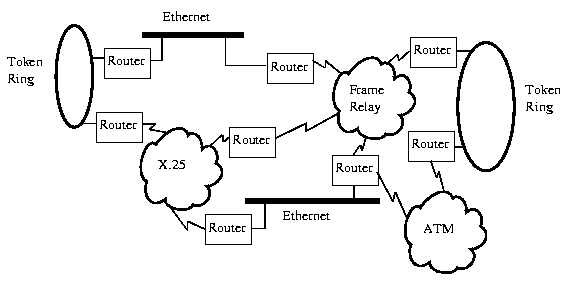| Introduction to Data Communications | ||
|---|---|---|
|
|
42d. Router Addressing | Next |
For Novell's SPX/IPX (Sequential Packet eXchange/Internetwork Packet eXchange), the Network Layer PDUs address is composed of the Network Address (32 bit number) and the Host address (48 bit - MAC address).
RIP is a distance vector algorithm. Routers maintain a detailed view of locally attached network segments and a partial view of the remainder of the routing table. The routers contain information on the number of hop counts to each segment. A hop is considered to be one transverse through a router. Pass through a router and the Hop count increases by 1.

The routers are updated every 30 seconds, each router sending out a RIP broadcast. This advertisement process is what enables RIP routing to be dynamic. Dynamic routers can change routing tables on the fly as the network configuration changes. By using the Hop Count information from their routing tables, routers can select the shortest path - the least number of hops to the destination.
Apple uses RTMP (routing table maintenance protocol) which adds a route status indicator: good, bad or suspect depending on the age of the route information.
Novell adds ticks to the RIP algorithm, Ticks are dynamically assigned values that represent the delay associated with a given route. Each tick is considered 1/18 of a second.

LAN segments are typically assigned a value of 1 tick, a T1 link may have a value of 5 to 6 ticks and a 56 Kbps line may have a value of 20 ticks. Larger number of ticks indicate a slower routing path.
Three commonest problems that can occur with RIP are:
| Introduction to Data Communications | ||
|---|---|---|
|
|
Table of Contents | Next |